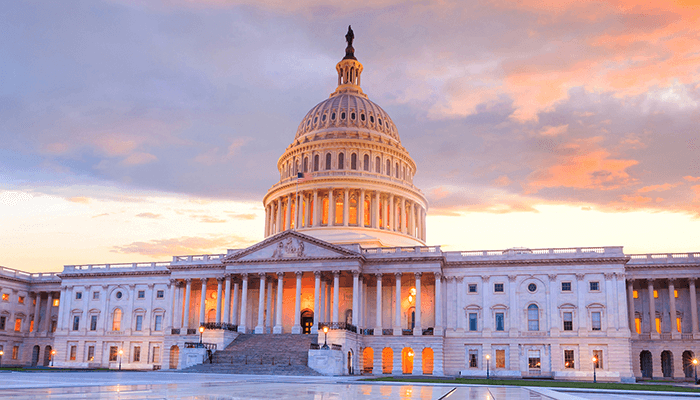Energy & Commerce Draft Would Help Limit Medicaid Gaming
The House Energy & Commerce (E&C) Committee recently released its proposed reconciliation legislation, which is expected to save over $900 billion through 2034 to help finance the broader reconciliation bill. In a separate piece we will provide a more complete summary of the various energy-, spectrum-, and health-related reforms. This piece will focus on the legislation’s Medicaid financing reforms – an area we’ve written about in detail in recent years.
The federal government generally covers a fixed portion of state Medicaid costs based on a formula set in statute. However, states have employed a number of financing schemes to both increase their own funding and to increase payments to hospitals and other providers.
Although the E&C draft disappointingly leaves most existing schemes in place, it puts forward a number of thoughtful changes to prevent further expansion of their use. Specifically, the E&C draft would:
- Freeze Provider Taxes. As we have explained, states often tax providers and then use those funds to pay the same providers, claiming the payments as part of their Medicaid match from the federal government. These arrangements distort the intended shared responsibility between the federal government and states. While allowing all current provider taxes to remain in place, the draft bill would ban states from increasing existing taxes or enacting new ones, effectively freezing states’ provider taxes where they are today.
- Improve Provider Tax Redistribution Requirements. The proposal would improve a financing requirement that helps ensure that states’ provider taxes are not just used to pay those same providers back, instead requiring payments be made to a broader share of providers than just those who paid them. While more analysis and a score from the Congressional Budget Office will help to understand how far this provision could go in conserving federal taxpayer dollars, addressing gaming in tax redistribution is a step towards more responsible state shares.
- Restrict State Directed Payments (SDPs). SDPs are payments to providers – mostly hospitals and other institutional providers – on top of managed care arrangements. In recent years, SDPs have grown from $26 billion in 2020 to $110 billion in 2024, in part due to a rule finalized in 2024 that set a cap on SDPs at commercial insurance rates, which are well above the rates that Medicaid normally pays. The draft would limit all new SDPs to Medicare rates while freezing existing SDPs at their current amounts. This would not only reduce future higher payments to providers, but also limit the incentive for states to continually increase provider taxes to fuel SDPs.
- Neutrality Requirements for Medicaid Demonstration Waivers. Section 1115 demonstration waivers allow states to test services or program designs that would not otherwise be permitted under the Medicaid program so long as the demonstrations are budget neutral. Over the years, the Centers for Medicare and Medicaid Services (CMS) have interpreted budget neutrality in flexible ways that allow states to inflate costs. The draft would require CMS to put additional guardrails around budget neutrality that would likely result in a clearer methodology that should help to curb cost overruns.
- Other Program Integrity Provisions. Some of the committee’s other proposed changes could strengthen the integrity and streamline states’ administrative burden while modestly reducing federal spending. For example, requiring better tracking and sharing of address information could help to minimize states’ administrative efforts to contact beneficiaries as well as reduce churn in and out of eligibility. Further, banning drug “spread pricing” in Medicaid could garner a small amount of savings as we have written.
Although CBO has not yet scored these provisions, we expect they would generate meaningful federal savings by preventing states from further abusing various financing gimmicks. In particular, the financing provisions named above together will help to limit the funds available for increasing supplemental payments that generally serve to shift the cost burden from states to the federal government.
At the same time, the current draft would leave most current financing gimmicks in place – effectively rewarding states who were more brazen in taking advantage of these loopholes. To address this, Congress could couple the provider tax freeze with a plan to gradually reduce the cap on provider tax rates (effectively set at 6 percent), ratcheting down over the course of several years. They could apply similar limits on SDPs, imposing gradual reductions on states that have already increased SDPs to the average commercial rate. In combination with restrictions on new schemes, a slow phase out of old ones would provide states time to shift to responsible alternative funding mechanisms, such as general funds. Additional savings from these measures could theoretically be used for deficit reduction or to finance any modifications made to other parts of the bill.
Unfortunately, the E&C’s proposed savings are not currently earmarked for deficit reduction but instead to be part of legislation that would massively increase the debt. We are pleased to see some significant changes to restrict Medicaid’s financing schemes, but those dollars should be used to shore up the Medicaid program and reduce its fiscal cost, not to facilitate a further deterioration of the national debt.


